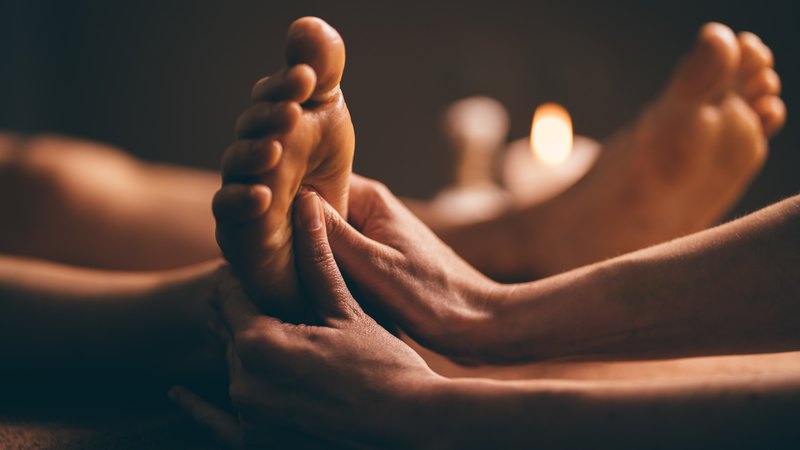
In the realm of alternative medication and holistic healing techniques, reflexology stands apart as a increasingly prominent and interesting strategy. This old practice, rooted in the idea that specific factors on the feet, hands, and ears correspond to different organs and systems of the body, has actually been getting grip in the Western globe as a complementary therapy for various health concerns.
Comprehending the Foundations of Reflexology Reflexology is based on the principle that there are reflex locations in the feet and hands that are connected to all parts of the body. Specialists believe that using pressure to these certain points can promote health in the corresponding organs with power paths. While the precise mechanisms are not totally recognized by contemporary science, lots of people report significant advantages from reflexology sessions.
The concept behind reflexology suggests that the body is divided into ten upright areas, each corresponding to fingers and toes. By using stress to particular points within these zones, reflexologists intend to launch blocked energy and advertise healing.
The Historical Journey of Reflexology The beginnings of reflexology can be traced back thousands of years. Contemporary reflexology as we understand it today was developed in the very early 20th century by Dr. William Fitzgerald and later fine-tuned by Eunice Ingham, frequently referred to as the “mother of reflexology.”
The Reflexology Process: What to Expect A common reflexology session starts with an appointment where the expert discusses the customer’s health and wellness history and present worries. The client after that eliminates their socks and footwear and sits comfortably or exists down. Using their hands, fingers, and sometimes little devices, the reflexologist applies differing degrees of pressure to specific points on the feet, hands, or ears.
The session generally lasts in between 30 to 60 mins, during which customers usually report feeling deeply unwinded. Some people experience feelings in various other components of their body as different points are boosted, which reflexologists translate as power moving via the body.
Potential Benefits of Reflexology While scientific study on reflexology is recurring, lots of people report a variety of take advantage of normal sessions. These might include:
Lowered anxiety and anxiousness Improved flow Enhanced sleep quality Relief from headaches and migraines Alleviation of gastrointestinal issues Boosted power levels Support for hormone balance It’s important to keep in mind that reflexology is usually considered a complementary treatment and ought to not replace traditional medical therapies. Nonetheless, lots of find it a beneficial enhancement to their general wellness routine.
Reflexology in Modern Healthcare As interest in all natural health methods grows, reflexology is discovering its area in various healthcare settings. Some medical facilities now supply reflexology as component of their integrative medicine programs, specifically for clients taking care of persistent discomfort, cancer-related signs and symptoms, or anxiety. Several spas and wellness centers additionally include reflexology in their service offerings, identifying its potential for stress relief and leisure.
Research released in the Journal of Complementary and conventional Medicine recommends that reflexology might be efficient in minimizing pain and improving relaxation, making it a promising corresponding treatment for various conditions.
DIY Reflexology: Self-Care at Home While specialist sessions can be valuable, some standard reflexology techniques can be practiced in your home. 秋葉原 utilizing a tennis sphere or reflexology devices can aid boost points on the feet. Lots of individuals locate this an enjoyable means to unwind at the end of the day or to reduce foot pain from meaning extended periods.
The Future of Reflexology As much more research study is conducted, reflexology may get further recognition in the medical neighborhood. Existing research studies are discovering its prospective applications suffering monitoring, stress and anxiety reduction, and also as an encouraging therapy for people going through cancer therapy. The non-invasive nature of reflexology, incorporated with its potential to promote leisure and total health, makes it an attractive option for those seeking all-natural methods to health care.
Whether deemed an all natural art or a science-based therapy kind, reflexology offers a special technique to understanding and sustaining the body’s natural recovery procedures. As we continue to explore the complex connections in between different components of our body, practices like reflexology advise us of the power of touch and the possibility for healing that exists within our very own hands and feet.
Understanding the Foundations of Reflexology Reflexology is based on the principle that there are response locations in the feet and hands that are connected to all components of the body. Modern reflexology as we recognize it today was developed in the very early 20th century by Dr. William Fitzgerald and later on refined by Eunice Ingham, usually referred to as the “mom of reflexology.”
The Reflexology Process: What to Expect A regular reflexology session begins with an assessment where the professional goes over the client’s wellness background and present worries. Reflexology in Modern Healthcare As rate of interest in all natural wellness methods grows, reflexology is finding its area in various medical care settings. DIY Reflexology: Self-Care at Home While specialist sessions can be useful, some basic reflexology techniques can be practiced at home.
